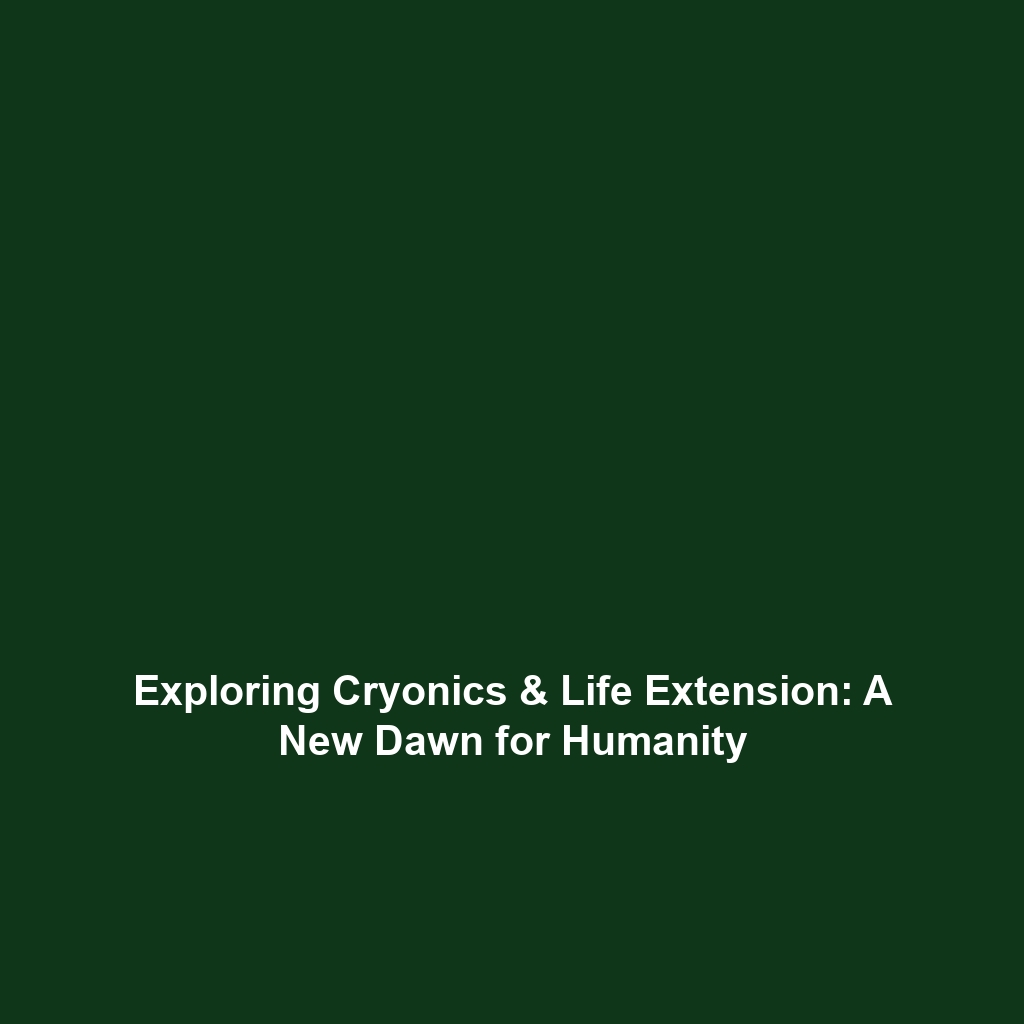Introduction to Cryonics & Life Extension
Cryonics is a field that explores the preservation of human life through low-temperature storage. As advancements in science drive the quest for life extension, the intersection of these two disciplines—cryonics and life extension—grows increasingly significant. This article serves as an introduction to cryonics and life extension, providing insights into their relevance in the pursuit of extended human longevity and preservation after legal death. Understanding these concepts not only highlights their potential but also reveals the ethical debates surrounding them.
Key Concepts of Cryonics & Life Extension
The major concepts related to cryonics and life extension include:
- Cryopreservation: The process of cooling and storing human bodies or tissues at very low temperatures to halt cellular metabolism and decomposition.
- Vitrification: A method used in cryonics to transform biological material into a glass-like state to prevent ice crystal formation during freezing.
- Life Extension Technologies: Innovations and treatments that aim to prolong human life and enhance general health, such as regenerative medicine and genetic engineering.
- Ethical Considerations: The moral implications of cryopreservation and the potential for future resuscitation, raising questions about identity and the definition of life.
Applications and Real-World Uses
The practical applications of cryonics and life extension are varied and thought-provoking. Some notable examples include:
- Preservation of Individuals: The use of cryonics to preserve individuals with terminal illnesses in hopes of future revival via advanced medical technology.
- Biobanking: The storage of biological samples at low temperatures for future research in genetics and regenerative medicine.
- Research in Aging: Studies on aging and cellular repair processes that could inform better life extension methods.
Current Challenges in Cryonics & Life Extension
Despite its potential, the study and application of cryonics and life extension face several challenges:
- Technical limitations in successfully preserving and reviving complex organisms.
- Legal and ethical debates regarding the definition of death and the rights of cryopreserved individuals.
- Public perception and skepticism regarding the viability and morality of cryonics as a practice.
Future Research and Innovations
Ongoing research in cryonics and life extension is poised to lead to groundbreaking innovations. Some promising areas include:
- Advanced Cryoprotection Agents: Development of new substances that enhance the safety and effectiveness of the vitrification process.
- Nanotechnology: Employing nanoscale advancements for cellular repair and regeneration to potentially extend life.
- AI and Predictive Models: Using artificial intelligence to better understand aging processes and improve life extension strategies.
Conclusion
Cryonics and life extension represent an exciting frontier in science, merging preservation techniques and transformative health technologies. As research continues to evolve, the possibilities for humanity’s future are vast. If you’re interested in learning more about these intricate topics, we encourage you to explore further articles on the science of cryonics and life extension strategies.
For more detailed insights, consider reading our articles on Cryonics Applications and Future Innovations in Life Extension.
